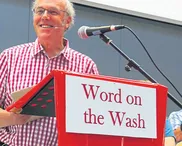A visit to the National Gallery's exhibition of Aelbert Cuyp (1620-91) is an experience of calm pleasure - these peaceful sunlit paintings of the Dutch landscape hold no hint of conflict or foreboding.
So it is difficult to realise that they were painted towards the end of a long and bitter struggle for the survival of the Dutch nation - and that the centre of that struggle was the theology of the Reformation.
The Netherlands (which included what are now both Holland and Belgium) had been under Spanish domination for almost a century. In 1555 Philip II of Spain had been given control of the region by his father, the Holy Roman Emperor Charles V. The influence of the Reformation had been very strong in this area - so that Philip's immediate edict against Protestantism sparked a widespread revolt in Antwerp, and other cities. This was cruelly put down by the Duke of Alva and his forces. A 'reign of terror' began, during which huge numbers of Protestants - including many artists - fled north. Among them was Cuyp's grandfather, Gerrit Gerritsz Cuyp, a glazier, who settled in Dordrecht.






